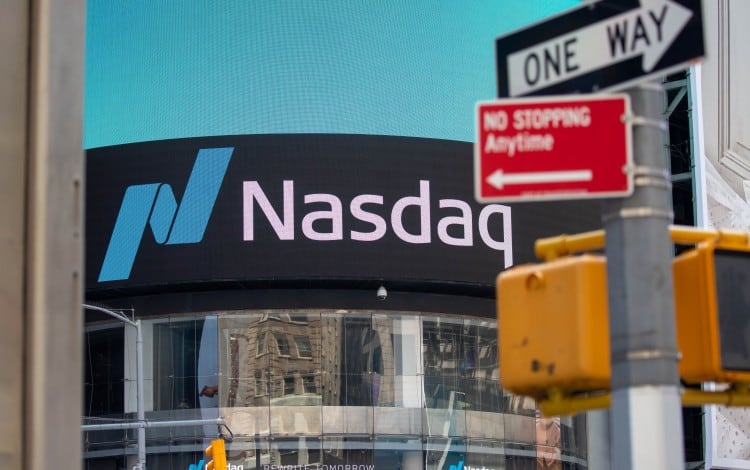
The market's biggest tech stocks have overpowered the S&P 500 so far this year, driving the vast majority of the benchmark's year-to-date gains and creating a worrying imbalance that could test its performance over the second half of 2023.
The Nasdaq Composite is riding its longest weekly winning streak in three years, having closed on Thursday at its highest levels in nine months. Tech stocks have been the linchpin to this year's overall performance, powered by a surge in demand for AI-related technologies, impressive earnings generation, and an easing in broader market interest rates as prospects for inflation ease.
Bank of America's closely tracked weekly Flow Show report indicates that tech continues to attract investor cash, drawing in $8.5 billion last week, the strongest on record, with inflows in May pegged at the second-highest of all time.
Overall stock inflows, in fact, neared $15 billion last week, the highest since February, as investors bet that the Fed will pause rate hikes and as they account for the conclusion of a debt-ceiling deal in Congress that will avoid a U.S. default.
"Interest rate stabilization, signs of receding inflation, and a potential peak in the terminal rate by this summer have helped bring buyers back into the (Big Tech) space," said Adam Turnquist, chief technical strategist, and Jeffrey Buchbinder, chief equity strategist, for LPL Financial.
"Rising recession odds in the U.S. have further increased the relative attractiveness of megacaps, as investors have shown a growing propensity for higher quality, well-established companies with sustainable growth profiles and fortress balance sheets."
Influence of 'Magnificent 7' Megacap Tech Stocks
The influence of so-called Big Tech stocks, which Bank of America has dubbed 'The Magnificent Seven," has been undeniable. Apple (AAPL), Microsoft (MSFT), Google (GOOGL), Meta (META), Amazon (AMZN), Tesla (TSLA) and Nvidia (NVDA) comprising around 8.8 percentage points of the S&P 500's year-to-date gain of around 10%.
These seven stocks also make up nearly a third (around 31%) of assets under management in its Global Wealth and Investment Management division, a 44% increase since the start of the year.
Nvidia's record surge last week added around $185 billion in market value to the Santa Clara, Calif., graphics-chip maker following a blowout first-quarter-earnings report. That means the stock has contributed to around a fifth of the S&P 500's year-to-date gain, even as it represents just 2.7% of the index weight.
That kind of move, as well as the broader Big Tech dominance, highlights a persistent concern for investors searching for clues as to the market's overall resilience: a lack of breadth.
Turnquist and Buchbinder note that only around 25% of S&P 500 stocks are outperforming the benchmark this year. And less than half are trading above their 200-day moving averages, a condition that suggests limited buying opportunities and a lack of investor conviction.
In fact, some 493 stocks in the benchmark have provided only 2.2 percentage points of its entire year-to-date advance, according to Bank of America data.
"In a typical bull market or even a developing one, widespread participation provides confirmation of the uptrend’s strength and sustainability," Turnquist and Buchbinder wrote. "When participation in the advance is limited -- as is the case for 2023 thus far -- vulnerabilities emerge as the weight of the market’s advance falls on the shoulders of a limited number of stocks."
Lack of Market Breadth Equals Misleading Gains
Michael Landsberg, chief investment officer at Landsberg Bennett Private Wealth Management in Punta Gorda, Fla., agrees that the lack of market breadth has been "misleading" in terms of the S&P 500's year-to-date gains.
The firm is advising clients to look at defensive sectors beyond the tech space, including consumer staples, healthcare and utilities.
"We believe we are in the midst of a bear-market rally and that the bear market is not over yet," Landsberg said. "The lack of market breadth, coupled with the past two quarters in a row of decelerating earnings, means there is still more downside risk ahead."
That view is largely echoed by Robert Schein, chief investment officer at Blanke Schein Wealth Management in Palm Desert, Calif., who argues that narrow breadth and Big Tech dominance are not sustainable drivers for a healthy bull market.
"We need the participation of other sectors," he said. "Investors should focus on actively diversifying their portfolios, with exposure to multiple sectors of the S&P and a variety of asset classes allows for better risk management in an environment where uncertainty abounds."
Data from Refinitiv suggest consumer discretionary, staples, financials and industrials will be the second-quarter earnings growth leaders, although overall S&P 500 profits are forecast to fall 5.4% from last year to a share-weighted $442 billion.
"We expect any summertime strength to be short-lived with downside pressure on stocks returning in the fall, as the market starts to price-in lower earnings estimates," Schein said.
"While we are not expecting a retest of the October 2022 lows, we could see the S&P 500 dip below 4,000 in the final few months of the year."
Get investment guidance from trusted portfolio managers without the management fees. Sign up for Action Alerts PLUS now.







